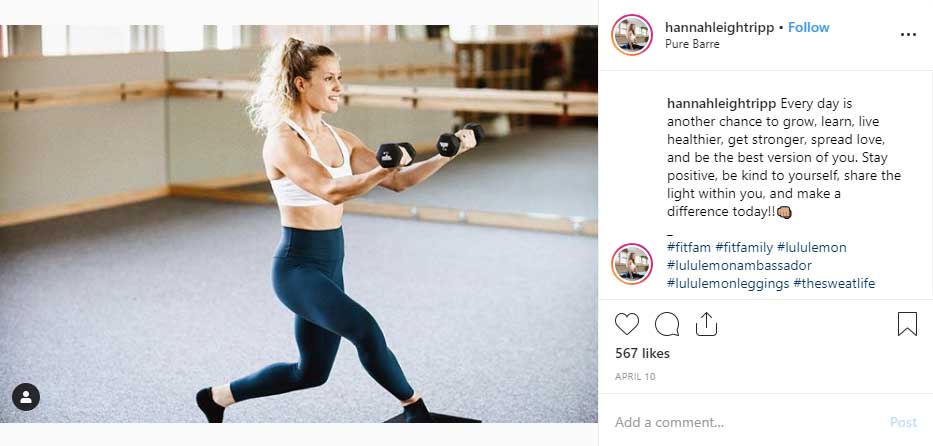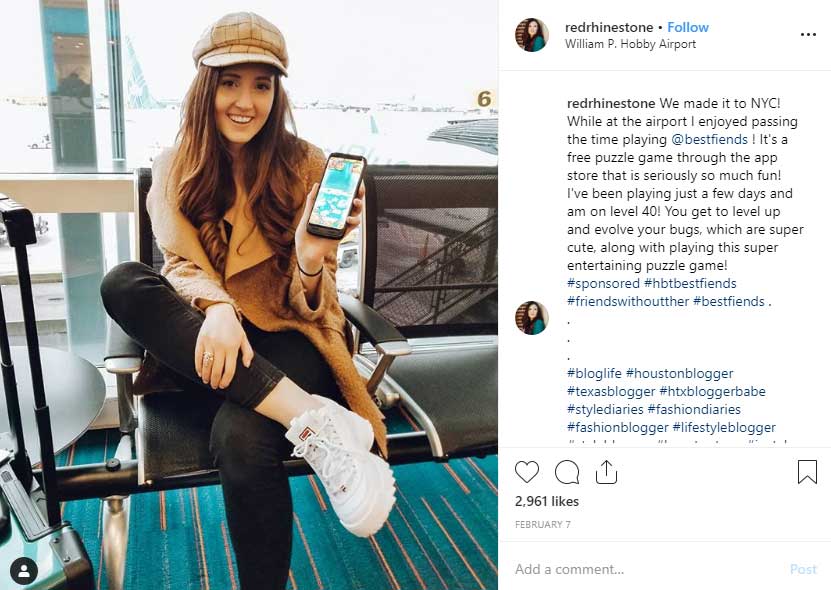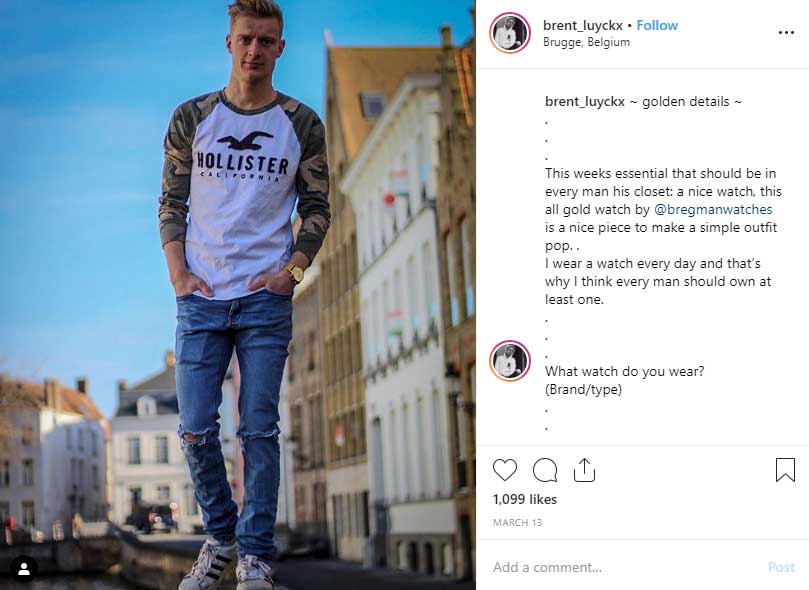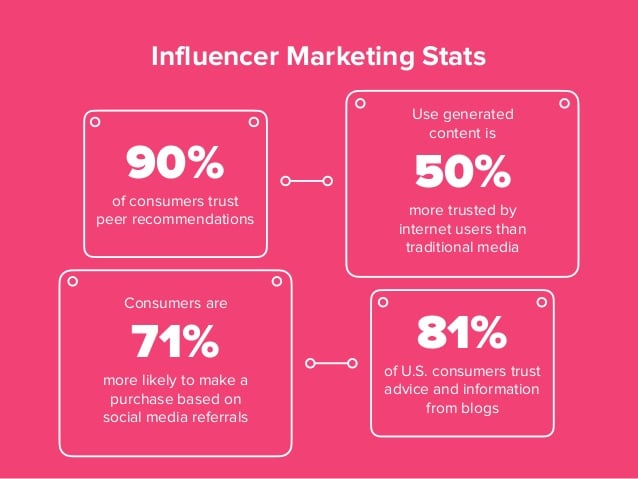Both brand ambassador programs and influencer programs are effective ways to gain new customers. After all, people trust recommendations from their network far more than they trust traditional ads. But the terminology in the word-of-mouth marketing world can be quite confusing. What’s the difference between a brand ambassador and an influencer?
Brand ambassadors are fans who have an established relationship with your brand, and serve as its long-term representatives. Meanwhile, influencers work with a brand for only a short time, and might not have used a brand’s products before becoming its influencer.
Still, both brand ambassadors and influencers share your product with their audience, which helps grow your customer base. But several other key factors separate brand ambassadors vs. influencers. Let’s examine the similarities and differences between the two in detail.
Who is a brand ambassador?
Brand ambassadors are real people who love your brand and your products. These individuals actively use your products or services, and are passionate about your brand.
Ambassadors are also experts at sharing your products with others via word-of-mouth. They aren’t always celebrities, and they don’t always have a gargantuan network of social media followers. But they are usually authorities in their field – and the field your brand serves.
For example, a dentist would make a credible brand ambassador for mouthwash. Or a fitness instructor would be a reliable brand ambassador for Lululemon.
But a brand ambassador doesn’t have to be a noted authority, either. As long as they’re committed to spreading the word about your brand, your best brand ambassadors can even be an employee, partner, or customer.
This fitness instructor is a Lululemon brand ambassador.
Most brand ambassadors agree to maintain an ongoing relationship with your brand and will continue to repeatedly promote it on social media, at trade shows, events, and through networking. Instead of using a script, they like to talk to others organically and one-on-one, as if they were having a conversation with a friend (although they may have to follow a list of guidelines that you provide). This is why brand ambassadors are so important for your marketing strategy.
They might receive money or free products as an incentive for their services, but it’s not a requirement. Often, brand ambassadors are more than happy to assist you without compensation – seeing you succeed is incentive enough.
After seven years of loyalty, Maker’s Mark Ambassadors receive the opportunity to purchase bourbon from a barrel that bears their name.
What’s one of the best parts of having a brand ambassador program? Ambassadors will usually create high-quality content, like social media posts, product images, and blog articles, for you for free. They’ll use their unique perspective to talk about your brand, so it’s easy for them to genuinely connect with their audiences.
It’s clear to audiences that a brand ambassador isn’t trying to push products or opinions. After all, they aren’t explicitly saying “buy this.” Rather, they are simply sharing why they love a product based on their own experience. As a result, brand ambassadors give potential customers a compelling reason to trust you.
In a nutshell, brand ambassadors are your informal (and extremely cost-effective) spokespeople, serving as the faces and voices of your product.
Who is an influencer?
An influencer is a content creator with a substantial reputation, and often a substantial social media or blog following, who promotes your brand. Instead of sharing your brand through word of mouth, they influence by example. Influencers authentically show others how they use your product, with their own voice, and on their own blog or social media channels.
A quick search for #ad or #sponsored hashtags on social media will reveal some examples of influencer marketing at work.
Influencer Redrhinestone shows how the mobile game Best Fiends helped her pass time at the airport.
Unlike brand ambassadors, your relationships with influencers will likely be short-term. An influencer will usually promote a product only once or twice.
An influencer may not have used your product before, either. Instead, you choose influencers for their reputation, dedicated following, and ability to reach a target audience. For example:
- A cosmetics company might ask a makeup YouTuber to share and review their products in a video.
- A plant-based snack company might ask a vegan blogger to sample and write about their newest snack.
- A fitness apparel company might ask known trainers or athletes share post of them using the product.
Influencers will expect some sort of incentive to promote a product. It could be money, free products for them and their fans, discounts, or all of the above. Nevertheless, an influencer will only choose to promote a product if they like it and they think it would fit in with their own personal brand.
Keep in mind, the right influencer doesn’t need to have a massive follower count. In fact, there are three main types of influencers:
- Celebrities (mega-influencers): The celebrity category includes both stars and social media influencers with millions of followers. Celebrities have wide reach, but usually have low engagement with followers: They don’t reply to comments and questions often.
- Macro-influencers: These personalities have over a hundred thousand followers (on their social media or blog), but less than a million followers. Macro-influencers have medium levels of reach and engagement.
- Nano-influencers and micro-influencers: These influencers have smaller audiences, in the thousands (nano-influencers) or tens of thousands (micro-influencers), with the least reach. However, they usually have higher engagement rates from their followers, and high authority in their niche (like food, fashion, fitness, or parenting). This allows them to talk with their followers like a circle of friends.
The influencers you choose will depend on your brand’s desired reach and the average engagement you’d like an influencer to have with followers.
Men’s fashion micro-influencer, brent_luyckx, promotes a watch.
If an influencer loves your product, it’s safe to assume their followers will be interested in buying it. According to Emma Knightley at the Digital Marketing Institute, almost half of consumers “depend on influencer recommendations” to determine which products to purchase.
About 40% have purchased a product after seeing an influencer use it on social media platforms, and 60% would consider purchasing an influencer-promoted product if they see it in a store. So, influencers’ marketing efforts can be extremely effective in driving purchasing decisions. Unfortunately, there’s also a potential downside: If an influencer you’re connected with loses their reputation and trust through questionable actions, it may lead customers to view your product negatively, as well.
Differences between brand ambassadors vs. influencers
There are many key differences between brand ambassadors and influencers. Here are some of the main differences:
| Brand ambassadors | Influencers | |
| How they promote your brand | Using word of mouth (telling others about your product)
Could promote you online, offline, or both |
By example (showing others how they use the product)
Will only promote you online |
| Length of relationship | Generally long-term relationships: ambassadors will promote your brand repeatedly | Short-term relationships: influencers only promote your brand once or twice |
| Payment | Will often promote your brand for free (but you should still give them perks such as free products, store credits, or other incentives as thanks) | Expect to receive some type of payment (money, discounts, or free products) |
| Relationship with your brand | Already actively use your product | Haven’t necessarily used your product before |
| How to select someone for your brand | Based on existing love for your product | Based on their ability to reach and influence an audience |
| How to reach out | Ambassadors already love your brand and have likely promoted it already. The next step is to invite them to join your brand ambassador program. | You need to reach out and ask, usually by sending a personal message and some product samples. Some might not choose to promote your product if it doesn’t stand out or align with their personal brand. |
| Metrics to track | Sales generated, by distributing tracking links via your ambassador program; reach of posts; engagement on posts; website visits generated | Brand awareness generated (reach of posts and engagement on posts); website visits generated
You won’t be able to track sales influencers make unless you recruit them as affiliates and use affiliate software |
| Software used to run campaigns |
|
Consider recruiting influencers as affiliates, and using affiliate software to enable sales tracking and encourage longer-term promotions |
Similarities between brand ambassadors vs. influencers
Even with all their differences, there are also many similarities shared by brand ambassadors and influencers.
- Both brand ambassadors and influencers are chosen for their authority, whether it’s in a field or over a target audience.
- Brands recruit brand ambassadors and influencers with the same end goals in mind – to share a product with their audiences, build brand awareness, and help generate new customers.
- Brand ambassadors and influencers help build trust in your product among potential customers.
- Both brand ambassadors and influencers have formal agreements with a brand, which usually entail creating and sharing content related to the brand or products.
- Brand ambassadors and influencers work best when they promote only the products they really enjoy. It’s important they they use their own voice, without coming across as too sales-y.
According to Neil Patel, nine out of ten people trust recommendations from someone in their network. Potential customers are “71% more likely to make a purchase based on social media referrals.”
Sometimes, an influencer marketing relationship may evolve into a brand ambassadorship. If an influencer grows to love a product they promoted, uses it regularly, and starts to share that love repeatedly and without prompting, a brand may offer a longer-term relationship. At that point, the person is no longer an influencer, but a brand ambassador.
Wrapping up
Your brand may recruit brand ambassadors and influencers for different reasons. Brand ambassadors already love your products, while influencers are chosen for their direct audience reach.
However, both brand ambassadors and influencers can help meet the same main objectives for your brand – to share your brand’s products or services with their own audience, from their own perspective. Because they both have an established position in their field, their recommendations can go a long way in attracting new customers to your business.
Interested in running an ambassador program, and looking for the right tools? Our list of brand ambassador software can help.








